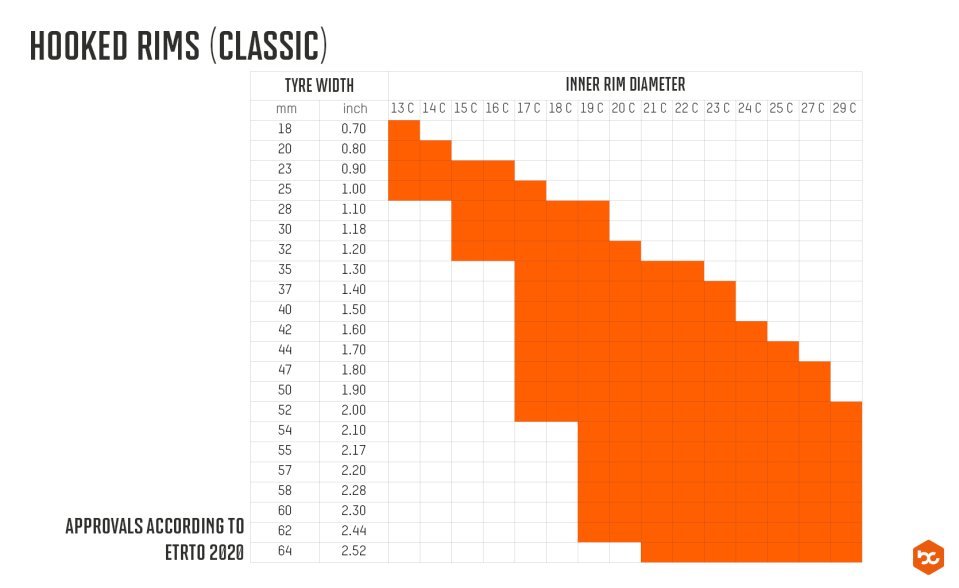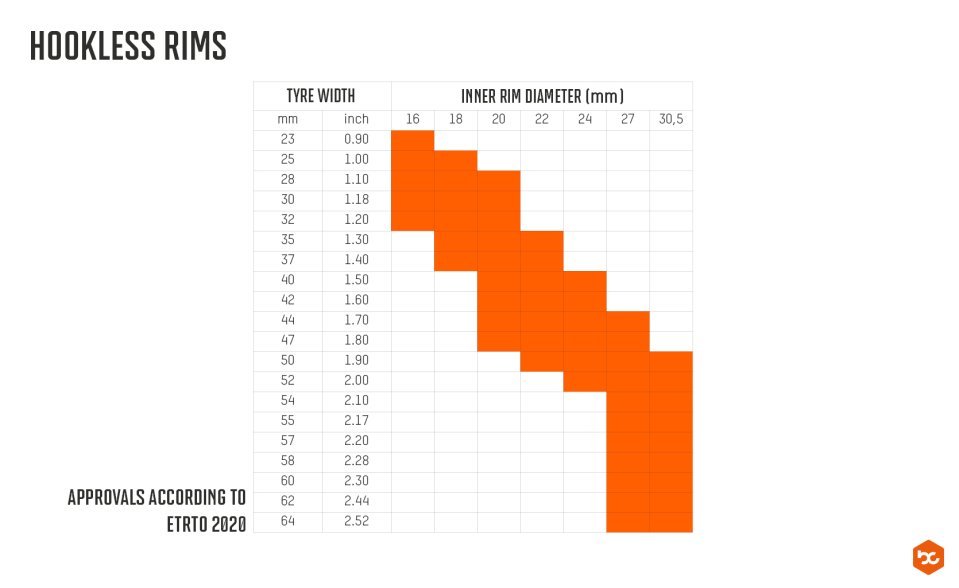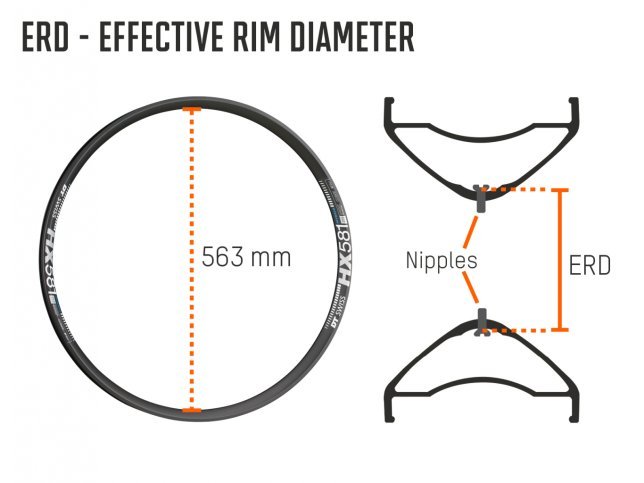
Bicycle inner tubes for road bikes or MTBs: Wha...
Bicycle tube or tubeless tyre? Butyl, TPU or latex? Find out which system is best for you and your bike here.
Looking for a new rim for your bike? We’ll show you what to look for when choosing the right rim for your MTB, road bike or gravel bike.
The right rims ensure that your self-built wheelset is as well-rounded as possible. No matter what material they are made of, how wide or high the cross-section is and how many spokes you use, your rims should be chosen based on their ability to withstand loads, i.e., to suit your intended use and riding style. When it comes to load-bearing components, you must be able to rely on them consistently. A super-light XC rim is not worth much if it goes to pieces in a demanding enduro race. A rim for your road bike should be light and ideally aerodynamic, but it does not have to be able to take as many knocks as ones for a mountain bike. Durability is also an important consideration for an everyday bike. We’ll go over important aspects to keep in mind when choosing the right rim.
The question may seem trivial, but it should be settled in advance: would you prefer riding with rim brakes or disc brakes? This is important because the two systems are not fully compatible with one another. Wheels with rim brakes require a rim with a flank that the brake pads can grip onto. Disc rims do not have this flank, so you cannot use them on a bike with rim brakes. To get you started, our shop’s “brake type” filter will help you narrow down the selection of suitable rims.
Of course, the diameter of your rims should match your frame or overall bike build. Specifications such as 29 inch or 27.5 inch are rounded values of the outer tyre diameter. The matching rims are standardised at the tyre seat – the Bead Seat Diameter (BSD). The most important dimensions here are
Within the guidelines set forth by ETRTO (European Tyre and Rim Technical Organisation), you will often find the measurement for rim diameter as it corresponds with the rim’s width.


The ERD (Effective Rim Diameter) indicates another diameter, namely that of the rim’s base. Since this is where the spoke nipples are located, this measurement is essential for calculating the correct spoke length for your new wheels. Be sure to note how it was measured! Some manufacturers already correct the value for spoke nipple height, while others do not. The method of measurement should match the formula you use to calculate spoke length, otherwise you might order spokes that are too long or too short. As a rule of thumb: if you are between two sizes, always round up the spoke length if you have rims from NoTubes or Mavic. For all other rims, round up or down to the next spoke length in the classic way. If you are unsure, please contact our service department. We are glad to help you to find the correct spoke length for your rim.

When placing your order, make sure that you select rims with the correct number of spoke holes! The number must match the number on your hubs. In general, more spokes afford more stability and durability to your wheel. The trade-off for this is a slightly higher weight. While 32 or occasionally 28 spokes are common on mountain bikes, 24 or fewer are often used on road bikes. For a cargo bike or a touring bike loaded with a lot of luggage, it is well-advised to use 36 spokes or more. Eyelets in the spoke holes are intended to better distribute the tensile force of the spoke nipples. Today, however, rims with eyelets are rarely found, as modern aluminium alloys and carbon can also withstand the forces that directly occur. If a slight increase in weight does not bother you and if you place higher value on durability and stability, then there is nothing stopping you from choosing rims with eyelets or, as an alternative, nipple washers. With some rims, such as those from market leader DT Swiss, such washers are already included in the scope of delivery. You can find all details and information in our product descriptions.
A decisive factor in choosing rims is the question of material: carbon or aluminium? Both materials come with their advantages and disadvantages. Rims made of carbon fibre-reinforced composite material can be made significantly stiffer for the same weight or significantly lighter for the same stiffness. Less weight is a big advantage especially with rotating masses, which you can feel during every acceleration or sprint. The high-end material can also be shaped more freely, which is particularly advantageous for aerodynamic deep-profile rims on road bikes. The obvious disadvantage of carbon: it’s more expensive. Aluminium is first and foremost cheaper, but there are also other arguments in favour of this lightweight metal. With mountain bikes on off-road terrain, you can sometimes encounter harder punctures, and if you cannot brake immediately in the event of a flat tyre, your rim will take a beating. In this worst-case scenario, aluminium will bend or deform before it breaks. It’s often possible to finish a ride with a dent in the rim, but not with a broken rim. Its flexible use in emergencies is a favourable characteristic of aluminium. As for sustainability: aluminium is recyclable, provided it is disposed of correctly. Carbon fibre reinforced polymers (CFRP), on the other hand, cannot yet be recycled to deliver the same level of quality.
In earlier times, rims were often made from steel, but these days are mostly made from aluminium and increasingly more often from carbon. © bc GmbH & Co. KG
In keeping with the trend towards wider tyres, wide rims have become popular both on- and off-road in recent years. Twenty years ago, mountain bikes often had rims that were as narrow as 17 to 19 millimetres, but today 25 or even over 30 millimetres are the norm in terms of width. Widths around 21 millimetres are no longer a rarity on road bikes. The rims on your gravel bike probably fall somewhere in between. We are not talking about the width of the rims on the outside, but about the so-called jaw width. This is the distance between the two rim flanks, i.e., the width measured on the inside. The width of the tyre determines how your tyre sits and impacts its cross-section. You can compare the cross-section of a wide tyre on a narrow rim with the shape of a pear. On a wide rim, however, the same tyre will build up more volume. The sidewalls do not converge as much but stand more upright and support the tyre better overall. This allows you to ride with lower air pressure before the tyre pops off in curves or on obstacles such as roots or kerbs. However, that does not mean that wider automatically equates to better. With the same stiffness and stability, wide rims are slightly heavier, so it’s important to find a good compromise. The rim must, of course, also match the tyre. If the rim is too narrow, the tyre’s tread will be pulled down further at the sides. The side lugs of a mountain bike tyre are then set at a different angle and only grip in curves at a significantly higher lean angle. If, on the other hand, the rim is too wide for the tyre, the tread will build up in a rather "angular" way and cannot function as designed by the manufacturer. This makes the transition from the tyre’s tread to the sidewall rather inharmonious. In the worst-case scenario, the grip can suddenly break off at high lean angles.
Unfortunately, we cannot give you a formula for calculating the ideal rim width at this point, as tyres from various manufacturers are constructed differently. For many rims, rough estimates are given as to which tyre widths they work with best. Ideally, the manufacturer of your favourite tyres will recommend a width that works best. Maxxis, for example, marks MTB tyres optimised for wide rims (30-to-35-millimetre jaw width) with the suffix "WT" for Wide Trail. If you are still unsure, we will be happy to help you personally!
Rims with a greater level of depth are mainly found on time trial bikes. The deeper profile reduces stall and turbulence. However, you don't have to be a triathlete or time trialist to benefit from it. You can reach speeds where the difference is noticeable even when riding a normal road bike. The deeper your rims, the more streamlined your bike will be. Some manufacturers go one step further and design the surface of the rim like that of a golf ball, with lots of small and uniform indentations. These “dimples" help to reduce the drag coefficient and thus the air resistance even further. Aerodynamics specialist Zipp also reduces susceptibility to lateral wind forces with their patented Sawtooth™ rim design.
Deep rims reduce turbulence on the wheel. © bc GmbH
Almost all modern rims are designed with a double bottom – these are called hollow section rims. The hollow chambers make a decisive contribution to the stiffness of the rim. In some cases, several of them are used to make the rim even more stable. In the cross-section – the rim profile – you can see the walls between the chambers as struts. Material and wall thickness are other factors that determine how stiff or comfortable a rim will ride. A deep rim is not only more aerodynamic, but also vertically stiffer. This affords you efficiency and a direct riding feel, but also comes at the cost of comfort and weight. Unfortunately, there is no dimension that tells you how stiff a rim is in the data sheet. Therefore, it is best to follow the manufacturer's weight restrictions and recommendations for use. If you want a rather stiff rim, then look for carbon and – especially in the road sector – a rather deep profile. If you want your wheelset to be comfortable above all else, then look for lightweight aluminium rims within the scope of your intended use and rider weight. A special feature is offered by the 3Zero Moto rims from Zipp. These carbon rims for trail and enduro mountain bikes are particularly flat and built without a hollow section. According to the manufacturer, this enables the rim to twist specifically around the spoke nipples. Zipp calls this “ankle compliance” in reference to the human ankle, which gives you the advantage of more traction and the possibility to ride with lower pressure in the tyre. So "stiffer" does not always mean "better" for everyone.
The bracing of the hollow chambers ensures greater rigidity on the rim. © bc GmbH
After the tyres, the rims endure more punishment than all other components on the bike. Durability and stability are therefore an important factor to consider. Rims that are too soft lose their concentricity more quickly or get dented when punctured. Furthermore, frequent load changes can cause spokes to break, even if the spoke tension is high enough. Stiffer rims provide a solution, but as previously discussed, these are often somewhat heavier and less comfortable.
In the meantime, most rims are tubeless-ready, meaning they can be used without a tube and with sealant approved by the manufacturer. This means that the tyre’s seat is more precisely manufactured, and your tubeless tyre should fit exactly on it. To prevent the air from simply escaping through the spoke holes, most rims must be sealed with special rim tape. This step is best done after lacing. Closed tubeless systems such as Mavic’s UST rely on even tighter tolerances for fit and closed-bottom rims that eliminate the need for additional rim tape. However, they are clearly in the minority on the market since the rim manufacturer can only influence the manufacturing tolerances of the tyre maker via extremely elaborate certifications.
Tubeless rim tape seals the rims so that air cannot escape through the spoke holes. © bc GmbH
Until now, most rims had a hook on each of the flanks towards the inside to provide security against the tyre popping off. With the lower manufacturing tolerances of high-quality tyres and rims for tubeless use, quite a few rim manufacturers dispense with this mechanical safeguard. The mounted and inflated tyre does not have enough room to move to be able to pop off over the rim flank. So-called hookless rims are easier to manufacture in the case of carbon, save weight and promote a rounder tyre contour. With hookless rims, particular care should be taken to ensure that the rim and tyre widths match and that the air pressure is within the range recommended by the manufacturer. Otherwise, the tyre could come off, especially with narrow road bike tyres and high pressure.
In addition to tubeless, traditional tubular tyres are also still used by road and cyclocross professionals and ambitious amateurs. The tyres are self-contained and are glued to rims specifically designed for them. Tubular rims such as the Mavic Open Pro T have no rim flanges and are not compatible with conventional tyres.
Lightweight rims and carbon rims in particular have a limit to the amount of spoke tension they can tolerate. For wheel building, make sure to use a tensiometer and follow the rim manufacturer's instructions! By the way, carbon rims are usually easier to true on concentricity, but rims made of modern aluminium alloys can also be worked with very well. Rim rings welded at the butt are a bit more fun in the truing stand than pinned ones because there is no edge. Make sure that the nipples protrude from the rim and can be tightened with a conventional spoke wrench, or if you have chosen rims where the nipples remain hidden in the hollow chamber. In this case you need a special spoke wrench to be able to turn them through the rim bed from above.